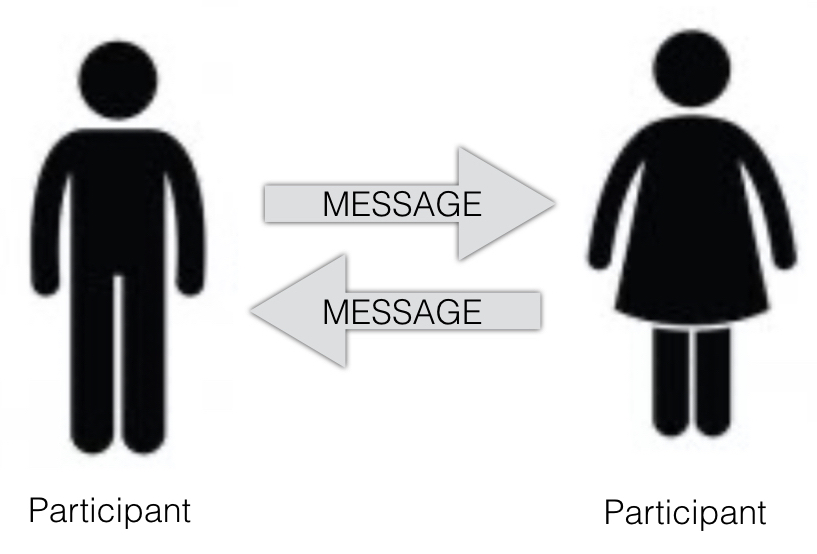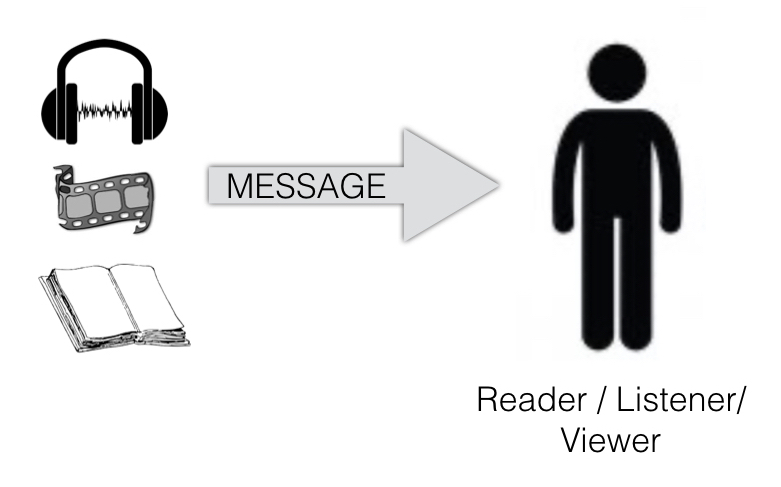Example - Revised Lesson Based on Analysis
For your reference, the context for the interpretive reading lesson is provided again below. Note two new learning objectives and additional cultural content have been added (in bold) to address the shortcomings identified in the analysis of the original textbook lesson plan.
PART I: Contextualize Your Lesson
The information below provides a context for the interpretive reading lesson based on the textbook chapter in which it occurs.
| Teaching Context | 1st semester French; postsecondary | |||||
| Chapter / Unit Learning Objectives | Students will be able to…
|
|||||
| Chapter / Unit Language Forms (grammar and vocabulary) |
|
|||||
| Chapter / Unit Cultural ContentProducts: the tangible (e.g., paintings, monuments, literature, clothing, etc.) or intangible (e.g., ritual, education systems, laws, etc.) creations of a particular culture. They reflect a culture’s perspectives.
Example: anti-aging / beauty / wrinkle creams Practices: Patterns of social interactions and behaviors. What to do, where to do it and how to interact within a particular culture. Reflect a culture’s perspectives and may involve the use of a culture’s products. Example: getting botox, coloring hair Perspectives: The values, beliefs, attitudes, and philosophical perspectives of a society; a culture’s view of the world. Inform a culture’s products and practices. Example: youth is beautiful and highly valued |
|
|||||
| Authentic Text(s) | Blog post & comments: Montréal, c’est ma ville! | |||||
| Communicative Mode(s) |
Interpersonal Interpersonal communication: Interaction and meaning negotiation in spontaneous spoken, written, or signed conversations. Exploring relationships, shared assumptions, conventions, imagination, creativity, and emotions that are grounded in understandings of textual content. Oral/aural and written.
Interpretive Interpersonal communication: Interaction and meaning negotiation in spontaneous spoken, written, or signed conversations. Exploring relationships, shared assumptions, conventions, imagination, creativity, and emotions that are grounded in understandings of textual content. Oral/aural and written.
Interpretive Interpretive communication: Reader, listener or viewer constructs meaning (e.g., interprets, understands, analyzes) from a written, audio, audiovisual, or digital text. No possibility of negotiating meaning. Aural and written communication.
Presentational Interpretive communication: Reader, listener or viewer constructs meaning (e.g., interprets, understands, analyzes) from a written, audio, audiovisual, or digital text. No possibility of negotiating meaning. Aural and written communication.
Presentational Presentational communication: Sharing information and ideas to an (often) distant audience in order to inform, explain, persuade, and narrate on various topics. Demonstrating awareness of communicative conventions relevant to the text type, context, and audience. No opportunity for negotiating or clarifying meaning. Oral and written. Presentational communication: Sharing information and ideas to an (often) distant audience in order to inform, explain, persuade, and narrate on various topics. Demonstrating awareness of communicative conventions relevant to the text type, context, and audience. No opportunity for negotiating or clarifying meaning. Oral and written.
|
|||||
| Terrell, T. D., Rogers, M., Kerr, B., & Spielmann, G. (2012). Deux mondes: A communicative approach (7th ed.). New York, NY: McGraw-Hill. | ||||||
PART II: Analyze Your Lesson
In this section you will analyze the activities from the textbook lesson using the information from Part I and your understanding of the Knowledge ProcessesWays that students interact with texts to make meaning; foundational types of thinking that students “do to know." Include four different types of activities students can carry out—experiencing, conceptualizing, analyzing, applying—as they develop their foreign language literacies. Can occur in any order. of multiliteracies pedagogy.First read through the revised lesson, then answer the questions in the table. At the bottom of the table, follow the directions to compare your analysis against that of the Literacies in Language Education project leaders.
ACTIVITY 1: Students compare facts (e.g., size, population, climate, transportation, cultural activities, etc.) about Montreal and home city based on instructor- provided information.
ACTIVITY 2: Students read title and brief summary of the blog entry (provided in the textbook) and predict its content and organization.
ACTIVITY 3: Students read and complete a text matrix to identify (1) information related to chapter vocabulary themes (the city, transportation, entertainment, shopping), (2) whether that information was presented in the blog post or comments, and (3) words from the text that support their answers.
1. Informations présentées dans le texte 2. Trouvées dans l’entrée ou les commentaires? 3. Justification – mots ou phrases du texte a. La ville b. Les transports c. Les distractions d. Les achats ACTIVITY 4: Students reread blog comments and classify them as positive, negative, or neutral.
ACTIVITY 5: Students use expressions of necessity to write suggestions for non-residents on what to do, where to go, or how to behave in Montreal to overcome negative comments.
ACTIVITY 6: Students discuss (in English) possible explanations for differing views of Montreal, speculate about insider and outsider opinions of their home city, and compare the two cities.
ACTIVITY 7: Students brainstorm questions to ask people about their home city for a similar blog post.
ACTIVITY 8: Students write a blog entry, including the comments they received.
| Context Analysis Enter the number of the corresponding learning objective(s), language form(s), and cultural content (see Part I) that are the specific focus of each activity. If no learning objectives, language forms, or cultural content are targeted by an activity, leave that box blank. |
||||||||||||||||||||||||||||
| ACTIVITY | 1ACTIVITY 1: Students compare facts (e.g., size, population, climate, transportation, cultural activities, etc.) about Montreal and home city based on instructor- provided information. |
2ACTIVITY 2: Students read title and brief summary of the blog entry (provided in the textbook) and predict its content and organization. |
3ACTIVITY 3: Students read and complete a text matrix to identify (1) information related to chapter vocabulary themes (the city, transportation, entertainment, shopping), (2) whether that information was presented in the blog post or comments, and (3) words from the text that support their answers.
|
4ACTIVITY 4: Students reread blog comments and classify them as positive, negative, or neutral. |
5ACTIVITY 5: Students use expressions of necessity to write suggestions for non-residents on what to do, where to go, or how to behave in Montreal to overcome negative comments. |
6ACTIVITY 6: Students discuss (in English) possible explanations for differing views of Montreal, speculate about insider and outsider opinions of their home city, and compare the two cities. |
7ACTIVITY 7: Students brainstorm questions to ask people about their home city for a similar blog post. |
8ACTIVITY 8: Students write a blog entry, including the comments they received. |
||||||||||||||||||||
| Which chapter/unit learning objectives does the activity address? |
1, 2, 6 |
1 |
1 |
5 |
1, 2, 4 |
5.6 |
1, 4 |
1, 2, 5 |
||||||||||||||||||||
| Which chapter/unit language forms does the activity address? |
1, 5 |
1 |
1 |
1 |
1, 4, 5 |
1, 5 |
1, 2, 3, 5 |
|||||||||||||||||||||
| Which chapter/unit cultural content Products: The tangible (e.g., paintings, monuments, literature, clothing, etc.) or intangible (e.g., ritual, education systems, laws, etc.) creations of a particular culture. They reflect a culture’s perspectives. Example: anti-aging / beauty / wrinkle creams Practices: Patterns of social interactions and behaviors. What to do, where to do it and how to interact within a particular culture. Reflect a culture’s perspectives and may involve the use of a culture’s products. Example: getting botox, coloring hair Perspectives: The values, beliefs, attitudes, and philosophical perspectives of a society; a culture’s view of the world. Inform a culture’s products and practices. Example: youth is beautiful and highly valued does the activity address? |
2 |
2 |
2 |
2 |
2 |
2 |
||||||||||||||||||||||
| Knowledge Processes Analysis Indicate which knowledge process each activity corresponds to by checking the appropriate box in the table. Note that some activities may correspond to more than one knowledge process. |
||||||||||||||||||||||||||||
| ACTIVITY | 1ACTIVITY 1: Students compare facts (e.g., size, population, climate, transportation, cultural activities, etc.) about Montreal and home city based on instructor- provided information. |
2ACTIVITY 2: Students read title and brief summary of the blog entry (provided in the textbook) and predict its content and organization. |
3ACTIVITY 3: Students read and complete a text matrix to identify (1) information related to chapter vocabulary themes (the city, transportation, entertainment, shopping), (2) whether that information was presented in the blog post or comments, and (3) words from the text that support their answers.
|
4ACTIVITY 4: Students reread blog comments and classify them as positive, negative, or neutral. |
5ACTIVITY 5: Students use expressions of necessity to write suggestions for non-residents on what to do, where to go, or how to behave in Montreal to overcome negative comments. |
6ACTIVITY 6: Students discuss (in English) possible explanations for differing views of Montreal, speculate about insider and outsider opinions of their home city, and compare the two cities. |
7ACTIVITY 7: Students brainstorm questions to ask people about their home city for a similar blog post. |
8ACTIVITY 8: Students write a blog entry, including the comments they received. |
||||||||||||||||||||
| Does this activity engage students in experiencingLearning through immersion in texts, activities, and social situations. Expression of thoughts, reactions, opinions, and feelings about familiar or new experiences, objects, ideas, situations, perspectives, and ways of communicating. Does not involve deep reflection or analysis. .? |
||||||||||||||||||||||||||||
| Does this activity engage students in conceptualizingLearning how language forms, conventions, organization, and other features of texts work to convey meaning. Unpacking texts, practicing skills and knowledge, and explicit learning about textual features helps learners participate more fully in communication. ? |
|
|
||||||||||||||||||||||||||
| Does this activity engage students in analyzingLearning by connecting the content of texts to social, cultural, and historical contexts. Questioning the meaning, importance, and consequences of textual content. Critically reflecting on textual content and its relationship to one’s own culture, perspectives, and learning. ? |
||||||||||||||||||||||||||||
| Does this activity engage students in applyingLearning by using new knowledge, skills, and understandings and by producing language in creative ways. ? |
||||||||||||||||||||||||||||
Reveal the responses of the Literacies in Language Education project leaders.
PART III: Evaluate Your Lesson
In this section, reflect on the revised lesson and the changes made based on its analysis.
- How does the revised lesson improve upon the shortcoming identified in the analysis of the original textbook lesson?
- How does the revised lesson better reflect the knowledge processes framework of multiliteracies pedagogy (experiencing, conceptualizing, analyzing, applying)?
![]() Now use a blank Checklist to analyze a text of your own.
Now use a blank Checklist to analyze a text of your own.
